When traveling to Brazil to visit family, one of the things that I look forward to the most is the fruit in Brazil. Not only is the variety of fruit in Brazil delicious, but it also takes a central role in the daily cuisine, being served at breakfast, for snacks, and as dessert right after lunch and dinner. If you’ve wondered about types of tropical fruit, you’ll love this guide to the types of tropical fruit in Brazil:
Types of Tropical Fruit in Brazil
Brazil is a tropical country with many different types of land and climates, resulting in a range of tropical fruit grown. The fruit in Brazil includes common fruits that are always around, like mangoes, papayas, and bananas, to less common ones that you can find during certain seasons or places, like jabuticaba and atemoia. That’s not including the approximately 3000 (!) types of tropical fruit that grow in the Amazon. And if you’ve been to a juice shop in Brazil, you know that it gets even more complicated!
How to talk about fruit in Brazil
When fruit is not ready, it’s called verde, meaning “green.” When you buy it at a grocery store, you’ll usually need to have it weighed in the produce section before going to the cashier. When you buy fruit at a market, bacia means per bowl or basket, and por kilo means by the kilo.
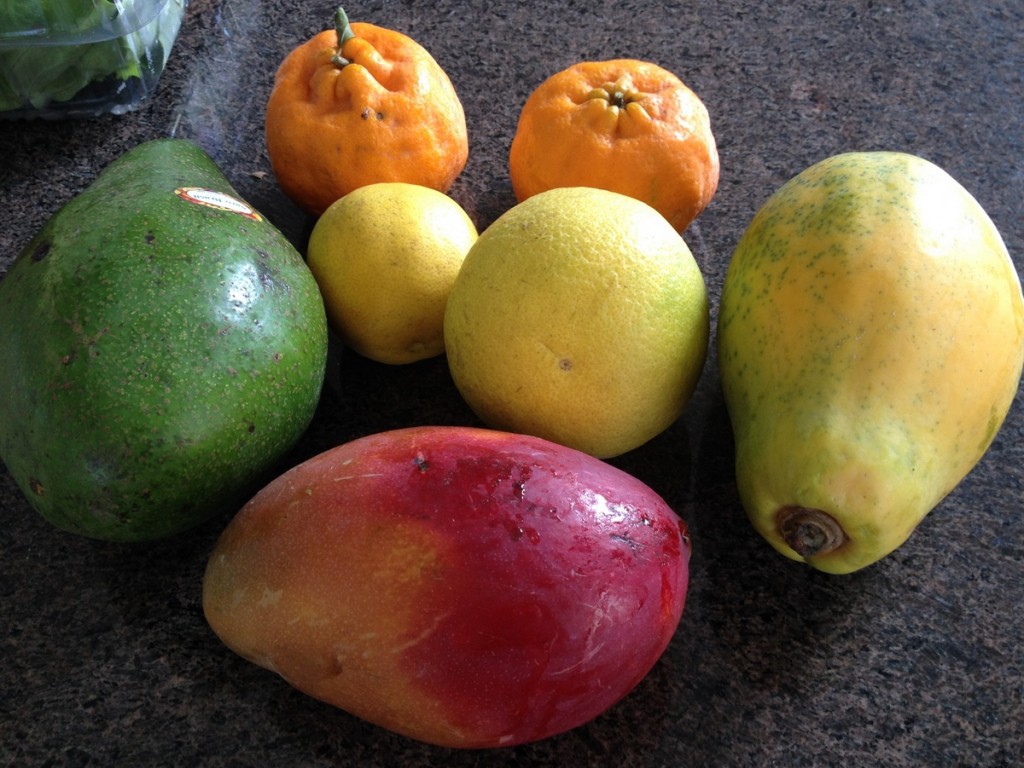
Here’s an overview of the fruit in Brazil that you can easily find while visiting this beautiful country. Portuguese names are given in italics.
Common types of fruit in Brazil:
Mangoes/manga: There are many types of mangoes, but the most common types of mango are manga rosa, manga espada (shown above), manga palmer, and manga ades. Look for the small ones called manga coquinho. Brazilians normally peel the mango, cut the fruit off the pit, and then suck the fruit that remains on the pit.
Avocado/abacate: Avocados are huge and cheap! About $1.50 will buy you an avocado about 5 times the size of those in the U.S. They’re always eaten as something sweet, mashed with honey or sugar or made in a smoothie with milk and sugar (never on a sandwich, in a salad, or as something similar to guacamole).
Papaya/ papaya & mamão: Brazilians think that papayas are good for the stomach and should be eaten at even the slightest sign of constipation, so they’re usually served at breakfast. Cut the papaya in half, scoop out the seeds, and then eat with a spoon or cut into wedges. In Brazil papaya is used for the small papayas (as seen in the photo above), and mamão is the huge variety. Both are common and very inexpensive.
Citrus: You might not associate Brazil with citrus fruits, but when I visit in July (Brazil’s winter), there are more citrus fruits in the house than any other type of fruit. Limão is a lime that looks like a round lemon. Mexerica (meh-sheh-ree-ka) is the Brazilian version of a mandarin orange — they’re larger and soft. A variety of oranges can be found in Brazil, such as the champagne orange shown above. Oranges are usually peeled and then cut in half so that you can suck out the juice and pulp.
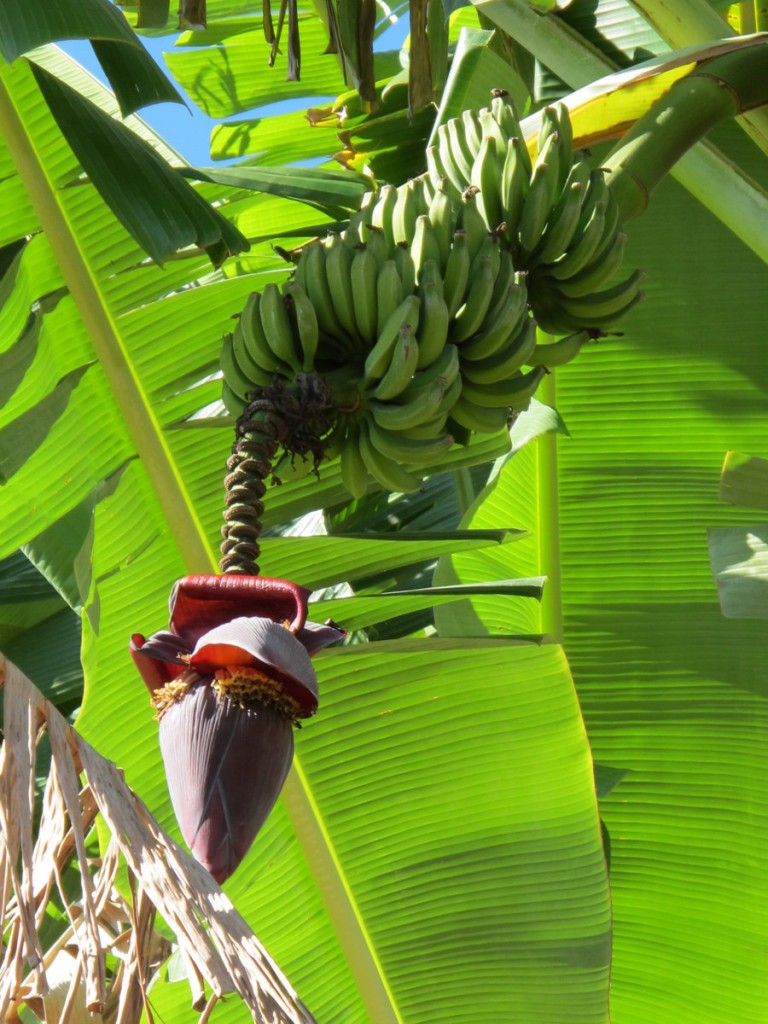
Bananas: Brazil is one of the world’s leading banana-producing countries, and there are many types of bananas to choose from. Banana prata (silver bananas) are a common variety, smaller than the bananas sold in the U.S. A much smaller variety is the banana-macã (apple bananas), which are a favorite of Brazilians. They need to be slightly brown and soft, as shown below.
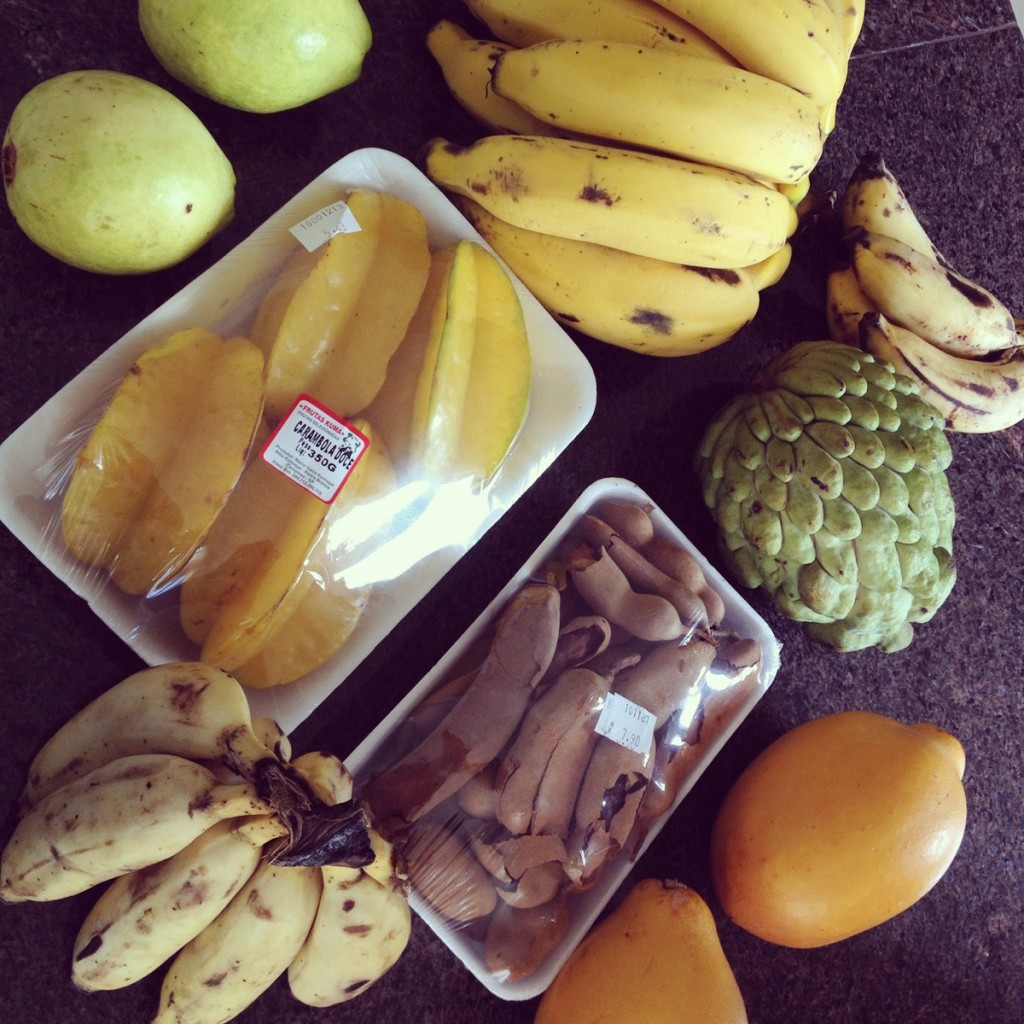
Guavas (goiaba): Guavas are one of the cheapest and most common fruits in Brazil. Two kinds of guavas are normally sold: white and pink (the colors refer to the colors inside), or goiaba branca and goiaba vermelha. I prefer the latter. You can remove the peel and cut it into pieces or cut it in half and scoop the fruit out with a spoon. The small seeds inside the fruit are normally eaten.
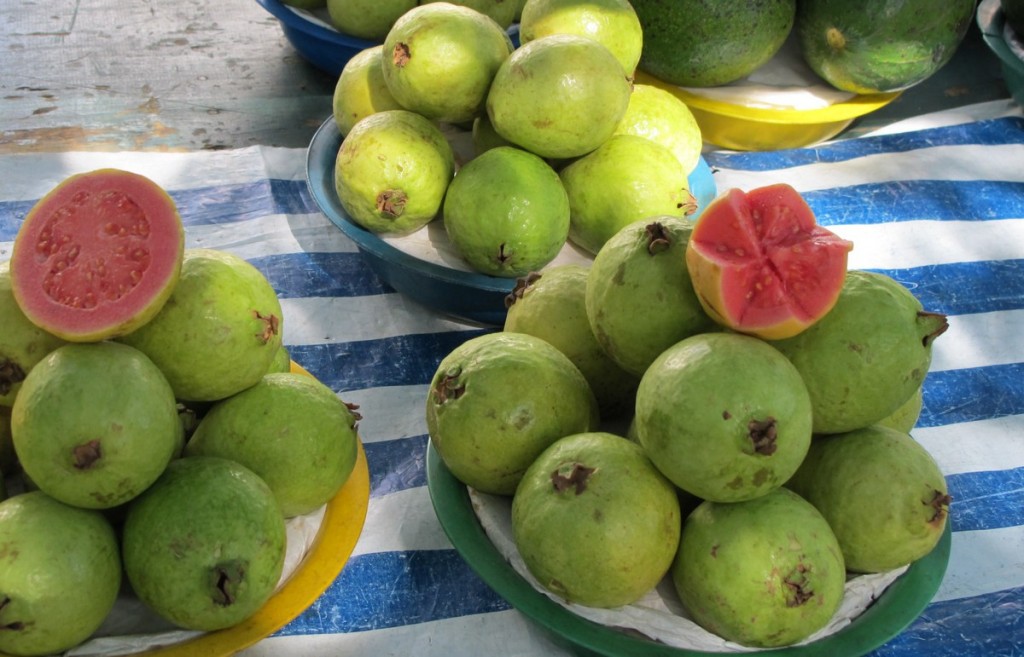
Atemoia: One of my favorite fruits in Brazil, atemoia is a cross between two other tropical fruits, the sugar apple and cherimoya. They are large green fruits with a soft, white inside and should be eaten when they are soft to the touch outside. You can just break it into large pieces and bite the white fruit off the peel. There are large black seeds that you’ll have to spit out.
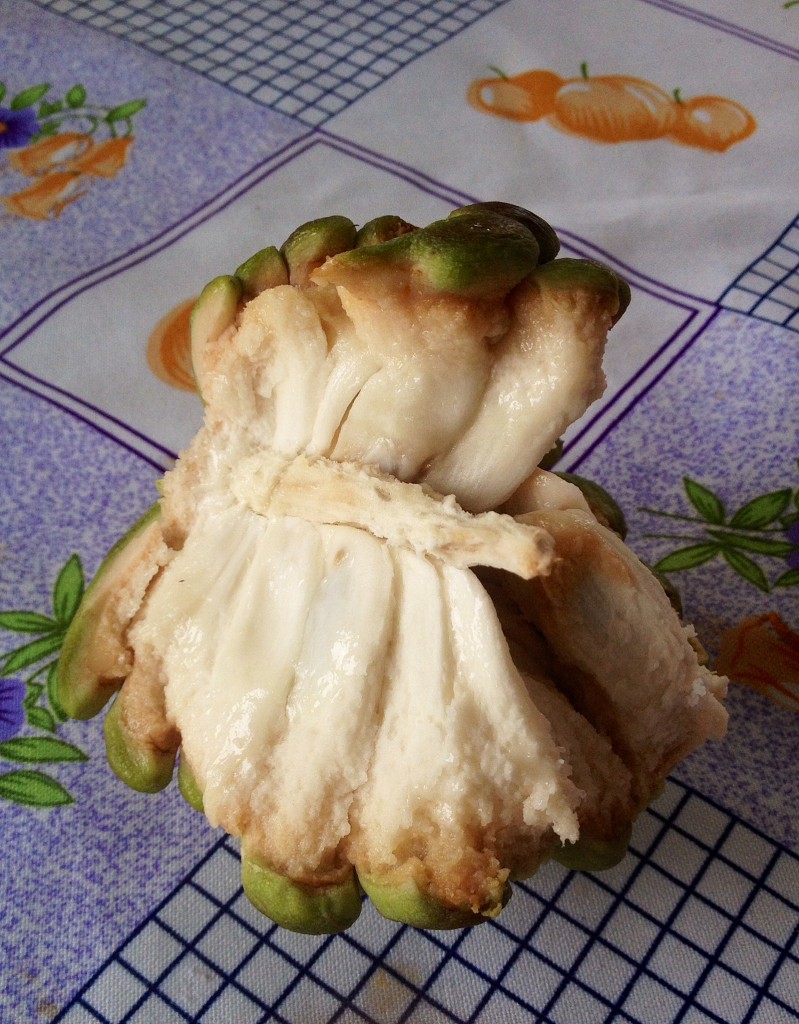
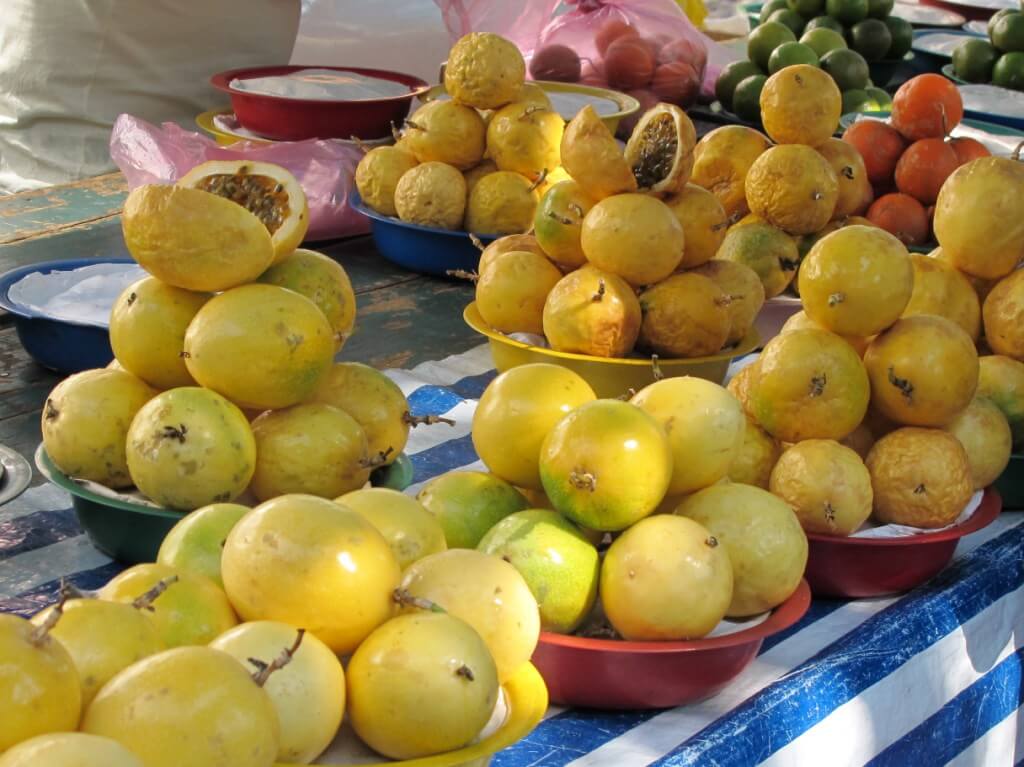
Passionfruit/maracujá: Common types of passionfruit are the sweet (doce) and sour (azedo) varieties, and the sweet ones are the ones you want to buy. Other varieties grow in Brazil, and smaller, round ones (shown above) can be found in markets and gardens. Cut the fruit in half, get a spoon, and scoop out the juice and seeds and eat them.
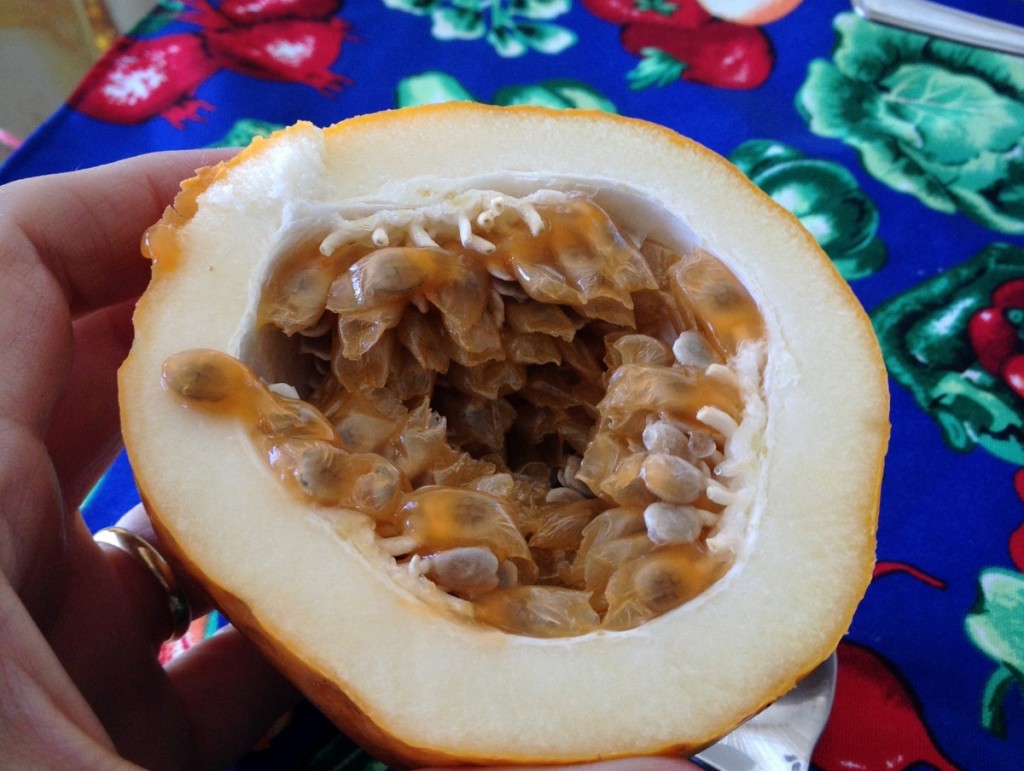
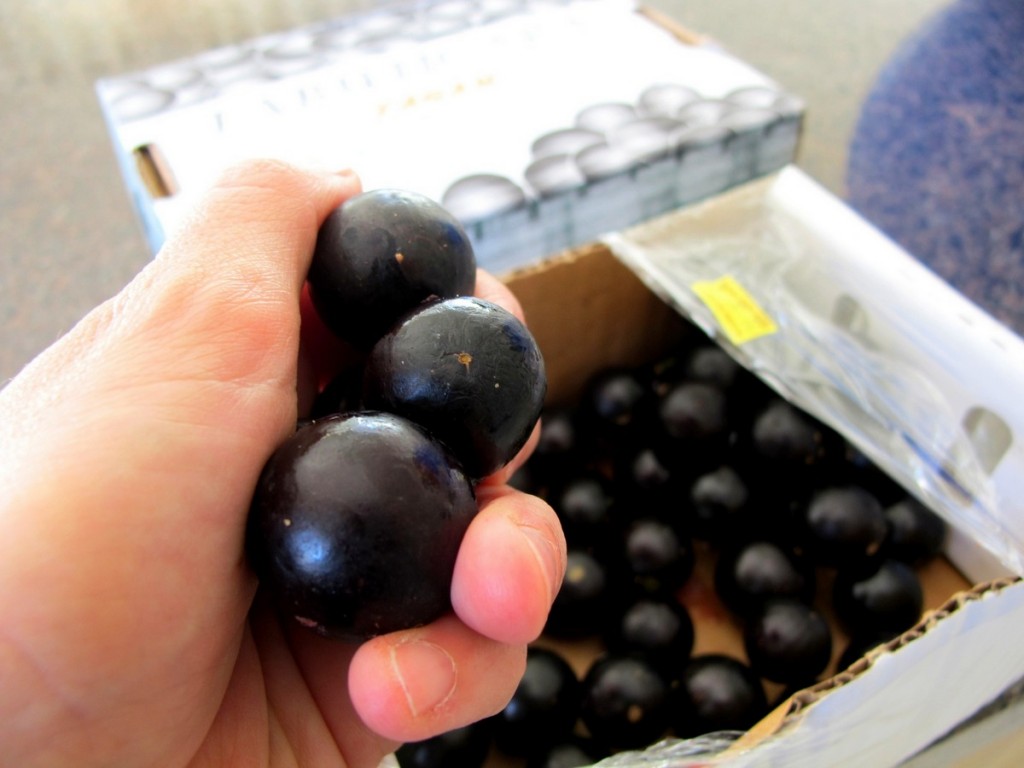
Jabuticaba: This is my husband’s favorite Brazilian fruit. The small round fruit grows on trees in the southern states of Minas Gerais and São Paulo. It’s not as cheap as other fruit and has a very short shelf life so is always eaten fresh. After washing, put the fruit between your front teeth, suck the clear inside out of the peel, and discard the peel and seed. The flavor is similar to a tart grape, but better.
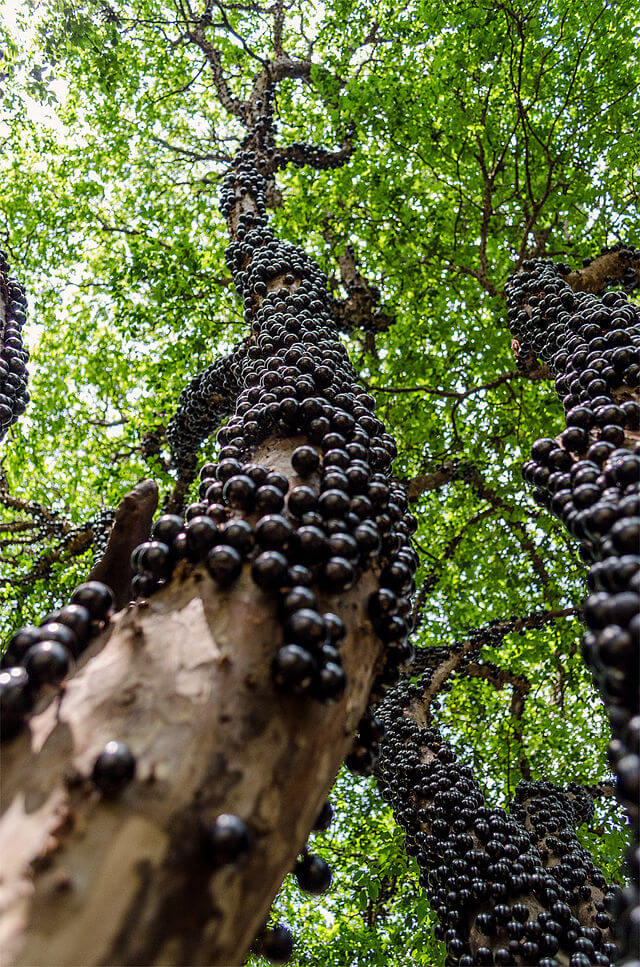
Jackfruit/jaca (“zhah-kah”): Jackfruit is from Asia and was introduced in Brazil. Even though the tree is considered an invasive species, it is one of the country’s most popular fruits. But I have found that Brazilians are split on this fruit — most like it, but some definitely don’t, and I have to admit that it’s not my favorite either.
The fruit is pulpy and while the tart yet sweet flavor is good, the texture can be off-putting. They are large, and once the fruit is opened, it spoils quickly, so a whole jackfruit is not a good idea for one or two people. In rural areas, you can see jackfruit hanging from trees–they’re so large that it’s quite a sight!
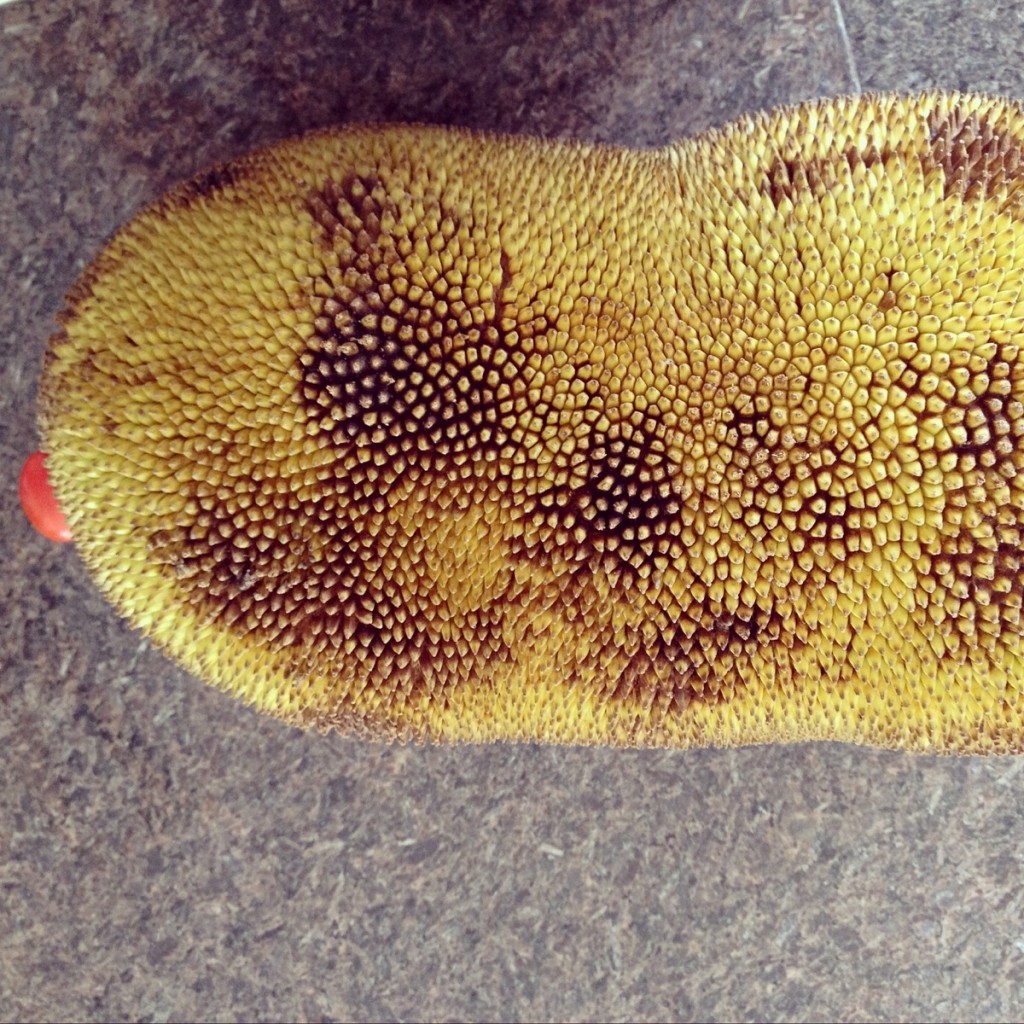
Cashew apple/Cajú: Cajú is a beautiful fruit originally from the northeast of Brazil. It has an unusual flavor that is popular as a juice. The top of the fruit has the cashew nut inside. The fruit itself has much more vitamin C than an orange but can be astringent.
How to eat a cashew apple: Usually people put the whole fruit in their mouth, holding onto the end, and suck the juice out; once the fruit becomes soft, it can be eaten if it’s not too astringent. The sweetest cashew fruit is found in the Northeast of Brazil in the summer.
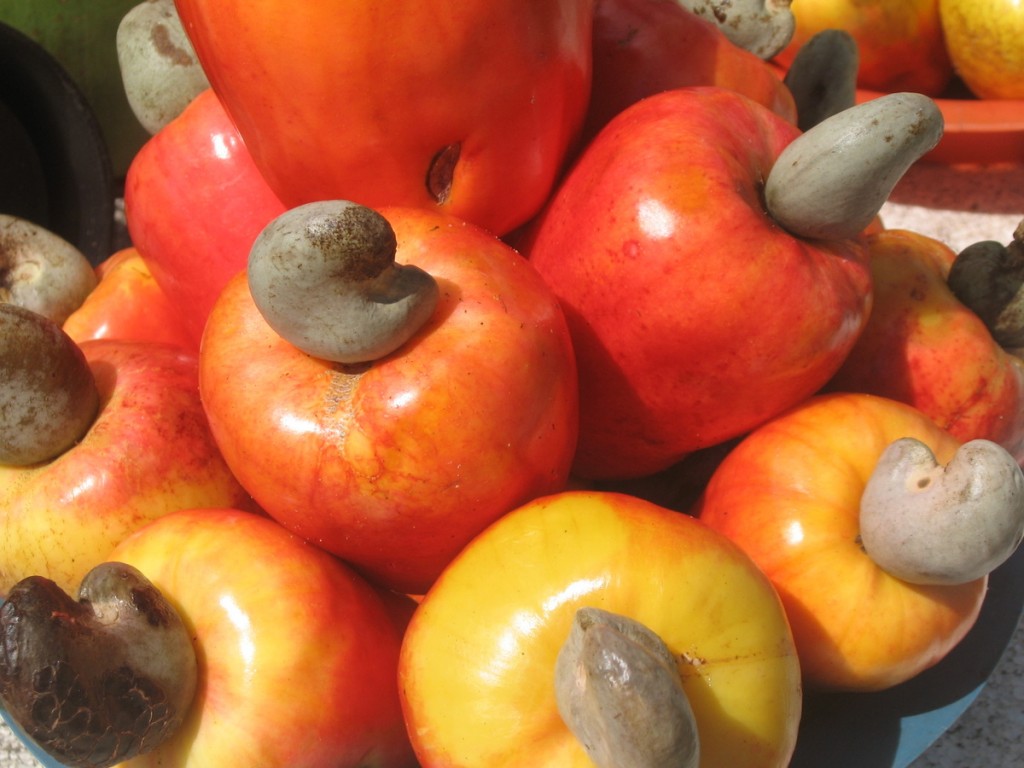
Açaí in Brazil:
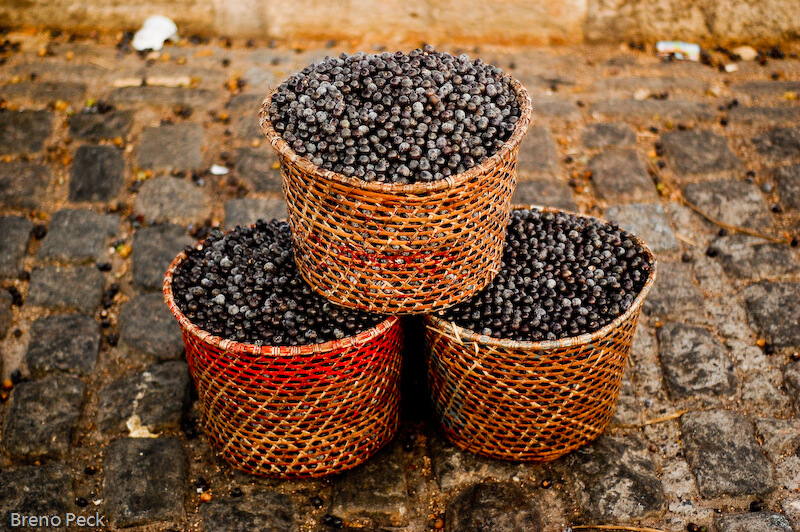
Açaí: Pronounced “ah-sigh-EE”
This world-famous superfood is just one of the fruits that grow only in the Amazon and are sold as frozen pulp in the rest of Brazil. Açaí shops where you can order a bowl of the frozen treat are common. It’s also a typical snack on the beach, as shown below. The most common way to eat açaí in Brazil is to order it in a bowl, served cold like frozen yogurt, topped with fruit and granola.
n BrazilAçaí sold on the beach with banana and granolaAnd you? Which of these fruits have you tried or would like to try? Do you have a favorite tropical fruit?
P.S. More about travel and food in Brazil:

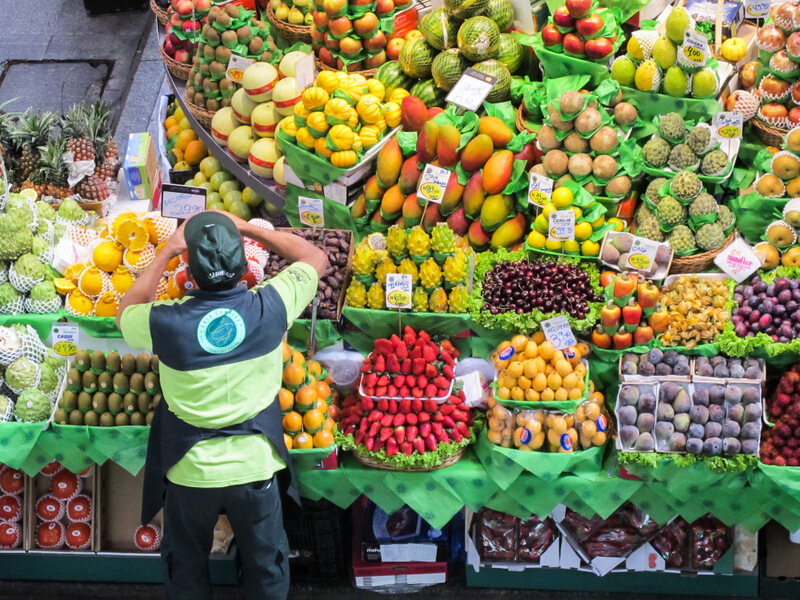
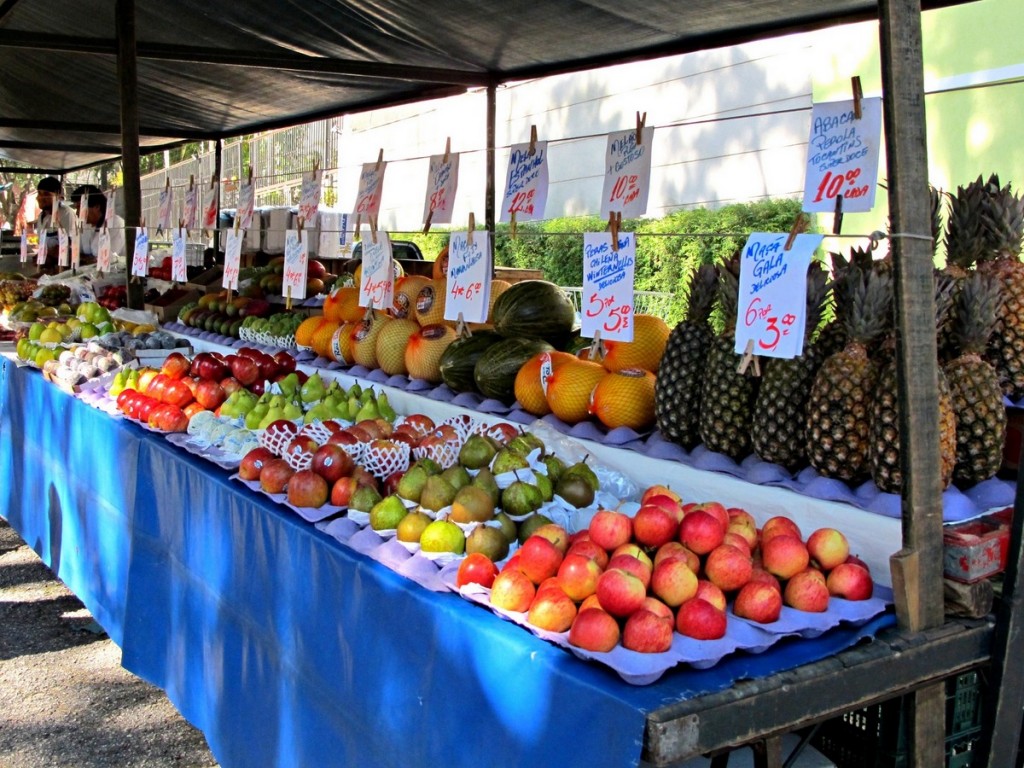
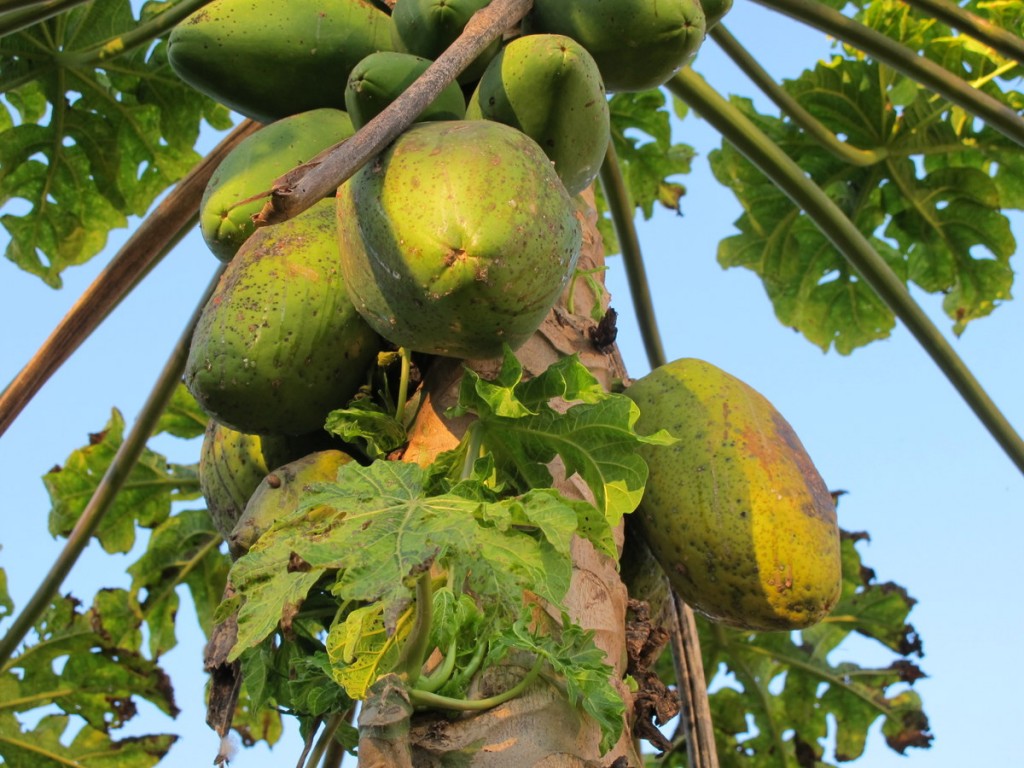
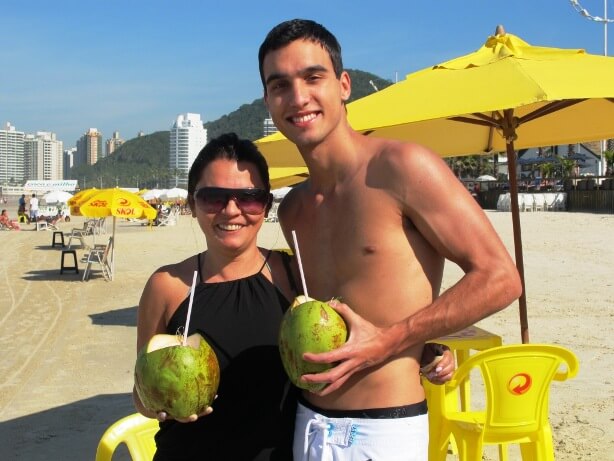
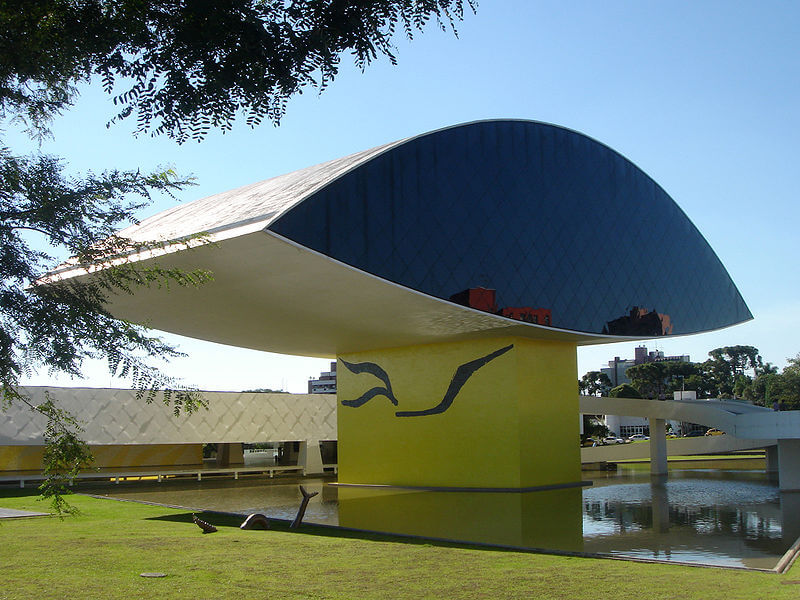
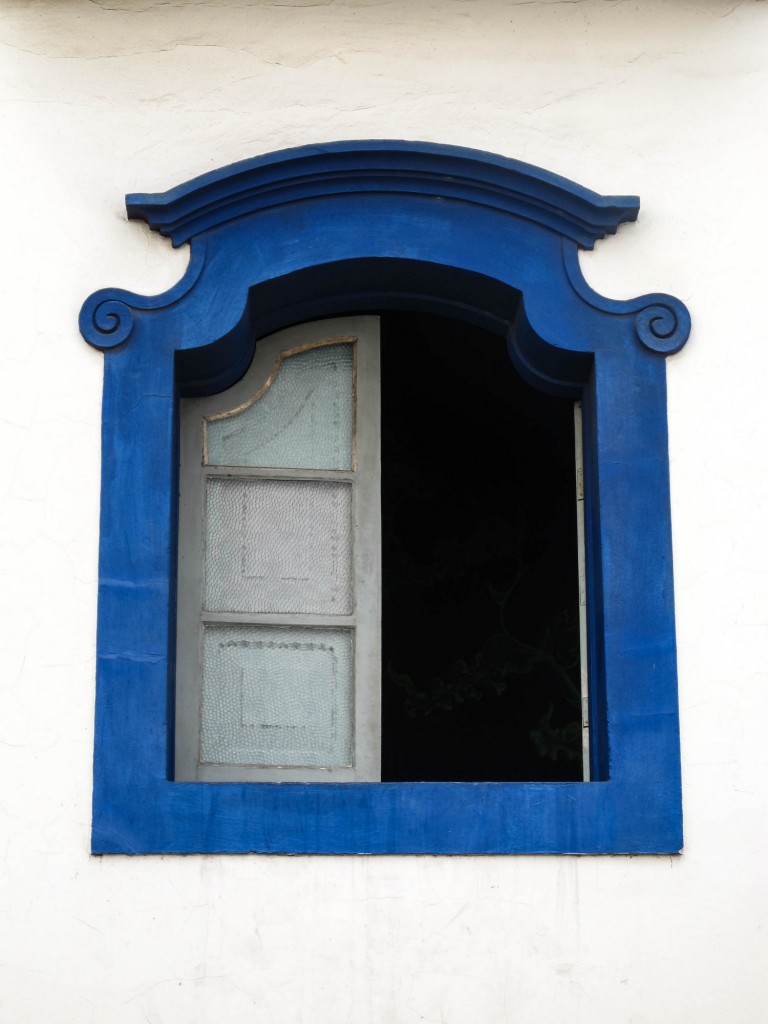
That Jabuticaba tree is so strange, with the fruit growing on the trunk. I just bought apple bananas this week (in Toronto!) and I ate one but it was too tannic, now I know to wait till it’s browner. Thanks!
Isn’t it strange?! And yes, most of the types of bananas here need to be eaten when they are completely yellow (no hint of green) and are a bit soft, maybe even with some brown spots. The apple bananas have a strange texture when they’re not ready.
A friend in Brazil told me lemons are green and limes are yellow. I saw limes are yellow but I didn’t see lemons in your photos or descriptions. I’m curious if it’s true.
Yes, it is something like that. I always find it confusing! I can double check with my Brazilian relatives. 🙂
Apple Bananas never ripen properly for us to eat them in North America. They have to grow completely one the tree and ripen or they don’t taste good at all. It’s a shame because in Brasil they’re amazing.
One of my favorite things while traveling is discovering different produce. I was under the assumption that cashew fruit was poisonous, looks like that’s not the case.
I love trying new produce, too, and a country like Brazil is the perfect place to do so.
The poisonous part of the cashew-prussic acid, I believe– is in the shell of the nut. Technically, the soft “fruit” is the engorged stem and the “nut”is the fruit.
Well, this post is a delight for a fruit lover! Very insightful. I learnt a lot today. I didn’t know custard-apple is called atemoia. Thank you. 🙂
Thanks, Renuka. I actually think the atemoia is not exactly the same as the custard apple because it’s a hybrid of 2 fruits, but it looks very similar!
Custard apple is called fruta do conde or pinha! Atemoia is another fruit. 😀
I think you know how obsessed I am with tropical fruits, so I LOVE this list! The photos of the the jabuticaba tree and the cashew apple are so fascinating! I’ve never seen other fruits that grow this way!
So glad you liked it, Cassie! And yes, the jabuticaba and cashew are interesting, indeed.
Wow .
Brazil is definitely the land of fruit .
I was in fruit heaven one week ago while in São Paulo.
So many strange fruits… at least for a European like me… Interesting guide. Thanks. It was a pleasure to read it.
Interesting for me, too, as an American 🙂 I have a lot of fun trying them and learning about them!
Jenna, what an intriguing blend of fruit! It somehow brings to mind vintage imagery of Carmen Miranda, a character I dressed up as at a Halloween party years ago. 🙂
Shawn and I have yet to make it to South America (and we want to remedy that) but Brazil’s fruit looks fantastic – especially the Jabuticaba. It all reminds me of our time in Southeast Asia when we discovered durian, jackfruit, snake fruit and dragon fruit for the first time. Wish you continued safe & fun adventures there!
I enjoyed discovering the fruits in Indonesia, too. I am fortunate here in Brazil that my husband’s family makes sure I try all kinds of local fruits and shows me which ones to buy, how to eat them, etc.! 🙂
Love this post and tropical fruit! I hadn’t heard of Jabuticaba before, but the rest I’ve heard of or tried. Keep exploring and sharing! 🙂
Thanks, Adam!
Jabuticaba, it is my favorite ever!!!
My husband’s too
Amazing guide, I’d only add one of my favorite from Northeast: “Siriguela”, so sweet and delicious you have to fight the birds for it. “Acerola” has lots of vitamin C. Others usually consumed as juice are “Graviola”, “Cupuaçu” and Cocoa.
Yes, thanks for adding those! I’ve had them all those juices except cocoa. My first stop in Brazil is usually at Valadares in Sao Paulo for a juice of orange juice with acerola. I love the vitamin C boost after flying.
hav u heard about poppulu banana, if anybody knows about the same kindly give me the details
I haven’t heard of that one.
We have to types of JACA(jackfruit), you have tried the soft one. It is not so good as the hard one. It is delicious, like a candy.
Hi Felype, I’ve eaten jaca in Brazil many times, but I didn’t know about the other kind. Thanks for mentioning it!
Magnificent site, congratulations Jenna.
As a Brazilian hailing from the Northeast region, i’d like to add the following fruits: Mangaba (i don’t know the name in English, maybe it is called mangaba fruit), it is small greenish or yellowish, the juice is insanely delicious, a must try!
Have ever heard of caja’ fruit ? it reminds seriguela, small yellow berries, it gives yet another amazing juice, it is highly addictive! Caja’ popsicle is also a pleasure to the palate, also a thirst lessener.
On the other hand, i just dislike breadfruit( fruta-pao), tamarind (tamarindo), don’t like star fruit(carambola ), pomegranate ( romã) either.
All the best
Vergetti, Thanks for all your recommendations! I haven’t had caja. I’m not a big fan of carambola either, but I love pomegranates. However, the pomegranates here in California are usually sweeter than the ones in Brazil. I’m going to Brazil again in December and can’t wait to eat all the fruit there! 🙂
Thank you so much for this guide! I am planning a short visit to Brazil in late December/early January. It will be my first time visiting and I’ve always wanted to try a cashew apple… Will I be able to get one in season while there? Also, after reading your post, Jabuticaba sounds really interesting and yummy! What is the best month to eat those?
Hi Angela,
Usually jabuticaba is in season in their winter, so I highly doubt you’ll be able to find those when you’re there. However, my husband (a Brazilian) thinks you should be able to find the cashew apple anytime.
Have fun! 🙂
I am Brazilian and I eat many fruits with the peel because it is the best part, specially from the goiaba and the jabuticaba (don’t eat the seed because is bitter). Just bite them.
Thanks for chiming in! Interesting that you eat the peel of jabuticaba. I have always been surprised that many Brazilians don’t eat the skin of grapes–here in the U.S., it would be unusual not to eat the skin of grapes, but maybe the grapes in Brazil have a tougher skin…?
Congratulations, Jenna ! I live in São Paulo and I just planted my first tree jabuticaba . As a kid I am able to spend hours in front of a jabuticaba tree. And I love JACA , very cold .
How fun to have your first jabuticaba tree! My husband, also a Paulistano, loves cold jaca too 🙂
We’ve just moved from California to São Paulo. I’m so excited for all the wonderful foods. Thank you for the jump start.
You’ll love the fruit! It’s one thing I miss when I’m not in Brazil.
We just went to a restaurant and had suco de cajú . The owner brought out a whole fruit for us to see. Just like your picture, but the scent! It was fantastic even though it was so delicate.
I’m from Vietnam, and these fruits are pretty much what we have here. look so delicious.
Hello Jenna,
So many fruits I love!
Thanks
In those days, we thought pawpaw is only sweet like sugar AMD yellow like fanta; not knowing it’s a great fruit for both health benefits and cosmetic use. papaya is perfect to nourish your skin
http://www.healthriskfood.com/2016/12/pawpaw-fruit-recipes-nutritional-facts.html
i need to buy Jabuticaba seeds for wild animals live on my land & Jackfruit/jaca, Açaí: how to buy these seeds
King regards
Hi Ronald, Sorry, but I have no idea. Good luck!
Hello Jenna,
Very nicely written article. I LOVE tropical fruits and would like to travel to Brazil to enjoy all types of fruits that are generally not available in the US market. Based upon my google search, looks like North-East region of Brazil is ideal for abundance and variety of fruit available. I also read that January is the peak season for mangoes as that is my one of the favorites. I was not able to find any site, info about the peak season for some of the main tropical fruits in Brazil. Is January a best time to enjoy bulk of other fruits besides mangoes? If not then please list the best month for like Jabuticaba, Acai,Cupuaçu, Caju, Graviola, Carambola etc. Also do you recommend Fortaleza city as the destination? Best tropical fruits is my sole purpose. and of course staying safe as well. Not much into touristy or night-life kind of stuff.
Thank you
Hi Sunny,
Sorry for not replying to your comment sooner. I don’t know the season for each of those fruits. Most of them are from the Amazon. I also have not been to Fortaleza, so I cannot advise you on that. I love Brazil and think it’s a wonderful country to travel in, but you have to be careful when you plan because it’s a big country–doing one region is probably the best choice.
Where the fruit “ Articum” comes from? Do you have fotos of it?
Is It possible to have it grow in US?
Thank you
Hi Fatima, I am not familiar with the fruit “articum,” so I can’t answer your questions. Sorry!
Acerola!
You forgot acerola. Also, carambola is very cheap in Brazil.
Mamão is huge. Papaya for us is the small mamão.
Melão os different and better too, is yellow inside and very very sweet.
Cajá os very good too.
Java have some cousins like Fruta-Pão and Fruta do Conde.
Thanks for the input, Andre. I should have included carambola–we eat it on every visit to Brazil. I didn’t include acerola because I never see people eating or buying it; instead, it seems to be served as a juice more often, but maybe I am wrong about that. In fact, my favorite juice in Brazil is laranja com acerola. I’ll add more to the description of mamão to make it clear that the papaya is the smaller one. I’ve never had or seen cajá. There are so many fruits there that it’s hard to try all of them!
How does one process the fresh açaí berries into something to eat or drink?
Good question! I don’t know the answer to that, but there may be information online about the process.
Hi Al and Jenna…. Just let me tell you a little bit more about this wonderful tree. I’m Brazilian and have been living in different states – from North to South. The Açaí palm tree has a high economic potential, mainly for its fruit which is used in the preparation of ice creams and juices and for the hearts of palm extracted from its stalks. The leaves are used as roofing for temporary huts and for closing walls. In etno-medicine, the root and the stem are used for muscular pain and snake bites and the leaves to relieve chest pains. The roots are also used to treat malaria and liver and kidney infections. The seeds provide a dark green oil, popularly used to treat diarrhea. Açaí is a highly nutritious plant, rich in amino-acids, fatty acids and sugars. The juice and pulp of Açaí fruits are frequently used in various beverages, sweets, jellies, cereal bars and smoothies. In Brazil, it is very popular among surfers when prepared as a thick smoothie topped with granola. Açaí fruits deteriorate rapidly after harvest, so outside its growing region it is generally only available as juice or frozen fruit pulp. The frozen fruit pulp is very deep purple and is reminiscent of a blueberry sorbet or ice cream. It can also be eaten raw or as a condiment, most commonly with shrimp or manioc. It is considered one of the most nutritious fruits of the Amazon, second perhaps to the Brazil Nut. Well, now let me tell you about turning açaí berries into frozen açaí pulp:
Each açaí factory follows roughly the same processes for turning the açaí berries into frozen açaí pulp. The end result, however, in both taste profile and quality can be very different. The açaí berry is very sensitive and requires rigorous quality control and management by each factory. Before açaí berries turn up in your açaí bowl, the berry has to undergo several processes.Because the berries spoils very fast it is essential that all these processes together do not last longer than 12 hours from the moment the berries are harvested. Most of the açaí does not come from plantations but is harvested from the wild by ribeirinhos. These are indigenous people living on the riverbanks of the Amazon region. After collecting the berries, the ribeirinhos sell them to the wholesalers (atravessadores) who then sell them to the açaí factory. During transport to the factory it is important that the freshly collected berries are not exposed directly to the sun. Açaí is sold in baskets called “latas” and each lata weighs approximately 14kg. The price of the lata is quoted on a daily basis according to supply and demand. When the fresh açaí arrives at the açaí facility, they are weighted and the origin of the açaí is registered. Because the berries spoils very fast it is essential that the berries arrive not later than 12 hours at the açaí factory from the moment the berries are harvested. The storage time of the fruit until processing may not exceed 2 hours, counting from the reception at the açaí factory. Biological contaminants such as bacteria, viruses and fungi are present in air, water and soil. Because these organisms can affect human health it is important to disinfect the wild harvested açaí berries. To decontaminate the berries, plastic, tiled or stainless steel tanks are used with chlorinated water with a maximum capacity of 500 liters. The berries are kept there for around 40 minutes. This also ensures that the berries softens which facilitates the removal of the açaí flesh from the kernel at a later stage (depulping). In general, 90% of the dirt is removed during this phase. The açaí berries are cleaned at the açaí factory to remove any dirt. The purpose here is to remove any residue of the chlorinated solution so that the quality and flavor of the final product is not altered. With a sieve any remaining dirt is also removed from the berries. All the water is removed in this phase. Now that the berries are clean and removed of any dirt, the depulping of the berry in the açaí factory can start. This happens by means of friction between the berries (the edible layer of the açaí is only 1 to 2 mm thick). Specialized stainless steel machines with a vertical internal axis generate circular movements that separates the flesh of the berry from the kernel. Because the açaí berry is naturally very dry, water is used in this process. The purity of the frozen açaí pulp is determined here. The more water is used in this process, the less pure will be the açaí pulp. This number is expressed in the dry rate of açaí. Export quality of frozen açaí pulp should have at least a dry rate of 12% (açaí médio). The highest quality is açaí pulp is called açaí special and has a dry rate of minimum 14%. Each depulping machine in an açaí factory has a capacity to process around 100 – 200 liters of açaí pulp per day. A large açaí factory will therefor have the need the have several depulping machines. After depulping the açaí berries, the paste is filtered with plastic sieves to remove any remaining material as a consequence of the depulping. For example the peel of the açaí berry or parts of the pits. During this process the fat globules are broken up to such a small size that they remain suspended evenly rather than separating out and floating to the surface. The purpose of homogenization is making things uniform or similar that is accomplished by means of high pressure. Homogenization is a physical process and not chemical and so nothing is added or taken away from the açaí. For food safety most distributors outside Brazil require the açaí to be pasteurized. This is a heating process that kills so called pathogens. Pasteurization is a very delicate process as it interferes both with the color of the açaí and the taste itself. The açaí pulp has now reached its final processing and is ready for consumption. The packaging machine at the açaí factory is directly connected to the homogenization / pasteurization equipment and is done fully automatically.
Here is a short video of the transformation process of açaí
I love eating fruit when travelling in South America and to other countries. It tastes so much different and better than when bought back here in my home country. Fruit is so much nicer when bought locally, rather than after being picked unripened and shipped thousands of miles away to a foreign country. One thing so nice about travelling to different countries is trying their fresh fruit. Often I have never seen or even heard of some types of fruit when travelling. On a few occasions, I have even purchased unique fresh fruit without knowing when it’s actually ripe or how to prepare it for eating. I look forward to enjoying fresh fruit everyday during my upcoming trip to Brazil. Thanks for posting all of this comprehensive information about fruit in Brazil. Have a great year ahead!
thanks after sharing